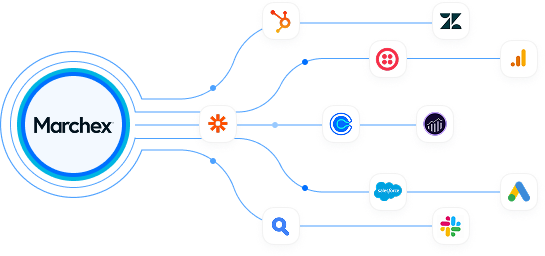5 Ways to Improve Call Handling Now

In the past year, customer sentiment has evolved. In several recent surveys and studies, it's clear that consumers and businesses agree that the buying process has changed. From buying everything from groceries to vehicles to software, researchers learned that customers still want to buy products and services; but they are demanding more, like knowing safety steps a business has put in place to protect them (and business employees). Below we'll examine some tips to improve your call handling now.
In one study on car buying, researchers found that consumers are still willing to buy, but they will not entertain a 3-hour sales process or slog to multiple dealerships to see cars. Customers want to research online, settle pricing via the phone, see current images of the car via text, and test drive and sign in the comfort of their own home.
1. Ask yourself – what do you want your customer experience to be? Then, call your business and/or specific business location(s) and see what happens.
Google your business.
Click each number that appears for Sales, Service, and so on. Test each of these as a customer to see what happens. You may need to borrow a friend’s phone so that your employees don’t recognize your number and give you special treatment.
Think strategically about your experience.
- Do calls go to the right phones?
- If a call is not answered immediately, where does it go?
Call after hours:
- How well does Interactive Voice Response (IVR)/voicemail work?
- How quickly can you reach voicemail?
- Try to leave a message from your borrowed phone and see how long it takes to receive a response.
Call during hours:
- How many rings before pickup?
- What greeting do you get? Is it the kind of greeting you want your customers to have?
2. Call a competitor to mystery shop their call handling experience.
Identify and implement best-practices that you learn based on how they handle calls to make improvements in your store.
3. Call Tracking Number (CTN) Tips and Tricks
If you route all calls to a receptionist or phone tree, using a single number is consistent with current best-practices and doesn’t create a false promise to the consumer.
If you list multiple numbers, but have the same person answer all calls without identifying the specific location associated with that number, e.g. Sales, Service, etc. you might be better served using a single CTN. What we found is a consumer typically calls the first number listed which is almost always sales.
Having fewer CTNs can help reduce SPAM. The more CTNs you have, the greater potential for more SPAM calls.
4. Interactive Voice Recording (IVR) Tips and Tricks
Pre-recorded menus that allow customers to be transferred to their desired department when calling a business.
- Pros: A business does not need to rely on a receptionist to transfer calls to different For high-volume business centers/call centers, this is very important, as callers may be missed by a rep during times of heavy traffic.
- Cons: Poorly recorded or lengthy recordings can start the customer’s interaction off on the wrong foot, leaving them unhappy when beginning their interaction with the business. Customers expect a personal and efficient experience, and IVR systems can potentially make them feel unimportant or undervalued.
Tips for improving your IVR:
- Quality – Ensure your recording is spoken slowly and If customers can’t hear or understand the options within your call tree, they will not select the correct department.
- Length – Keep your greeting IVR keeps customers waiting, and the longer they are asked to wait, the more likely they are to disconnect the call. Let them get to their options as quickly as possible.
- Options – Limit your The longer the recording goes, the more likely the customer is to disconnect. Limit your IVR menu to 2-3 options such as Sales, Service, and Parts before routing to an operator.
- Transfer Line Testing – Test your transfer lines. Make sure your menu directs customers to phones that will be answered by the correct department Customers want their questions or concerns resolved quickly, the less time they must wait, the more likely they are to stay on the line.
- The Number of Call Trees – Use a maximum of one call A customer who feels as though they are stuck in a call tree loop is unlikely to call back.
- The Human Connection – If possible, utilize a receptionist or While IVR systems can be very helpful for high-traffic businesses, there is a percentage of customers that will disconnect before connecting to a human no matter how short an IVR menu’s recording.
- Overall Experience – IVR can be a very helpful tool for a business to help manage their phone traffic, but it’s important to retain as many customers as possible and ensure that the call tree being used is not turning customers away from the business. Keeping a call tree concise and clear, and making sure it’s transferring customers correctly is vital in keeping customers happy and driving repeat business.
5. Troubleshooting common call handling problem areas.
Staffing
- Are you staffed accordingly for your 'busy' call volume times, e.g. Mondays between 8-10 AM, lunchtime, etc.?
- Do you have a plan to backfill employees in case someone is sick, etc.?
- Stay informed about the timing of outbound campaigns. Outbound campaigns will increase your call volume. Be prepared by reminding staff and recommending scheduling more people to answer the phones.
Call Routing
- Where are calls being routed, sales or service? Are there steps you can take to address hold time duration to reduce abandoned calls?
Technical
- Is your phone system working correctly? (Test daily)
Best Practice
- What do callers hear while on hold, e.g., music, a message from the owner/manager, are there updates provided on length of hold (estimate), or place in the queue, etc.?
Contact us to learn more and discover how we can help your business improve your call handling.



